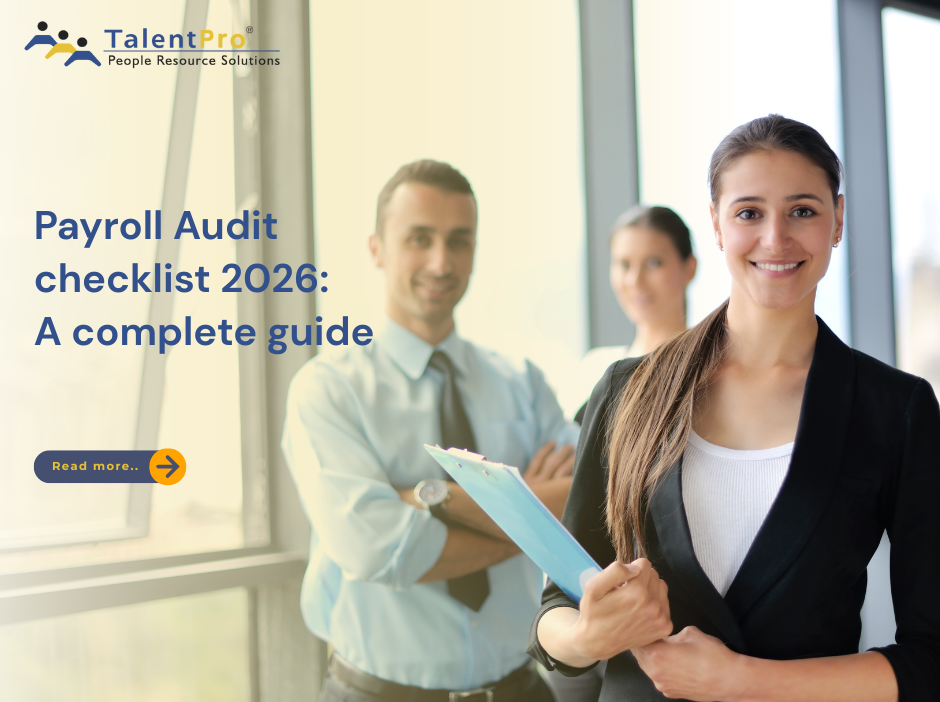Payroll might seem like a routine back-office function — pay people, deduct taxes, and move on. But small mistakes can cost big: overpayments, compliance penalties, Conducting a payroll audit isn’t just about fixing past errors; it’s about building trust, making your processes leaner, and avoiding bigger risks down the road.
Payroll Audit
A payroll audit or a compliance audit is an assessment conducted to identify mistakes ensure that that these errors that hamper the effectiveness of payroll systems do not occur again. These assessments can be carried out periodically in-house or with the help of payroll services. Payroll services and even the function of payroll audits can be outsourced to third-party service vendors service which offer services fraction of the cost that it would take to conduct in-house.
A payroll audit gives you a chance to:
- Validate that everyone on your payroll is actually employed.
- Confirm you’re classifying workers correctly (full time/part time, exempt/non-exempt) so you don’t run into labor law issues.
- Check that hours worked sync with what you pay — including overtime, bonuses, or other variable pay.
- Ensure deductions, taxes, benefits, and garnishments are applied correctly and deposited as required.
- Identify any unusual payments like back-pay, relocation, or sign-on bonus, which are more prone to error.
- Spot potential fraud — ghost employees, incorrect pay entries, or unauthorised changes.
- Understand where your payroll operations can be improved for efficiency and risk reduction.
Building your payroll audit checklist
Here’s a consolidated, practical payroll audit checklist, combining the frameworks from your three sources in a structured, step-by-step way.
Plan your audit
Set the audit timeline and scope
Decide the “look-back” period.
Define stakeholders
Include people from HR, Payroll, Finance, and possibly external auditors.
Draw up an audit plan
What data will you review? What systems will you pull from? Who owns each task?
Gather documentation
Collect all relevant records, such as:
- Employee roster, including start/end dates, classification, pay rate.
- Payroll registers (showing gross pay, deductions, net pay) for each pay period.
- Timesheets or time-clock data (hours worked, overtime, leave) to verify pay.
- Tax and benefit deduction records.
- A typical or one-off payment data (bonuses, reimbursements, back pay).
Check employee data
- Confirm that every person on the payroll is an active employee.
- Verify employee classification (exempt/nonexempt, full-time/part-time).
- Make sure any changes in employment (promotions, salary changes, terminations) are correctly recorded.
Verify payment accuracy
- Cross-verify hours recorded (timesheets) against what was paid -especially for hourly workers.
- Look at variable pay overtime, commissions, bonuses, and other special payments.
- Check non-standard payments: relocation, back pay, reimbursements.
Validate deductions and taxes
- Review tax withholdings to make sure they match the employee’s tax forms and local tax rules.
- Confirm that benefits deductions (health, retirement, etc.) are accurate.
- Verify garnishments (if any) are properly applied and paid out.
Review controls & Access
- Ensure only authorized personnel can submit employee data changes (compensation, employment status).
- Before finalizing payroll, reports should be reviewed and approved by a second party.
Post-payroll activities
- Confirm payslip distribution to employees (digital or paper) so they can review details.
- Reconcile compliance reports (statutory filings, tax reports) with actual payroll.
- Prepare General Ledger / Journal Vouchers and pass them to the finance team for accounting.
Continuous monitoring & Improvement
- Generate monthly SLA (Service Level Agreement) reports to monitor payroll team performance.
- Run monthly performance reviews to analyze KPIs, identify trends, and spot recurring issues.
- Update the audit checklist based on past findings, so that future audits become more efficient.
Report & Act on findings
- Prepare a detailed audit report summarizing what you found: discrepancies, risks, compliance issues.
- Highlight areas for improvement and recommend fixes (process changes, system upgrades, policy clarifications).
- Create a roadmap or action plan to implement improvements, with timelines, owners, and priorities.
A well-structured payroll audit checklist isn’t just a compliance formality—it’s a powerful tool to strengthen accuracy, reduce risk, and build trust within your organization. When you take the time to review records, verify payments, and tighten controls, you’re not just fixing errors—you’re shaping a smoother, more reliable payroll system for the long run.
At TalentPro, we believe that a well-structured payroll checklist is more than a compliance requirement—it’s a strategic tool that strengthens accuracy, transparency, and trust within your organization. With evolving statutory laws, workforce expectations, and operational complexities, even the smallest payroll oversight can lead to costly errors.










